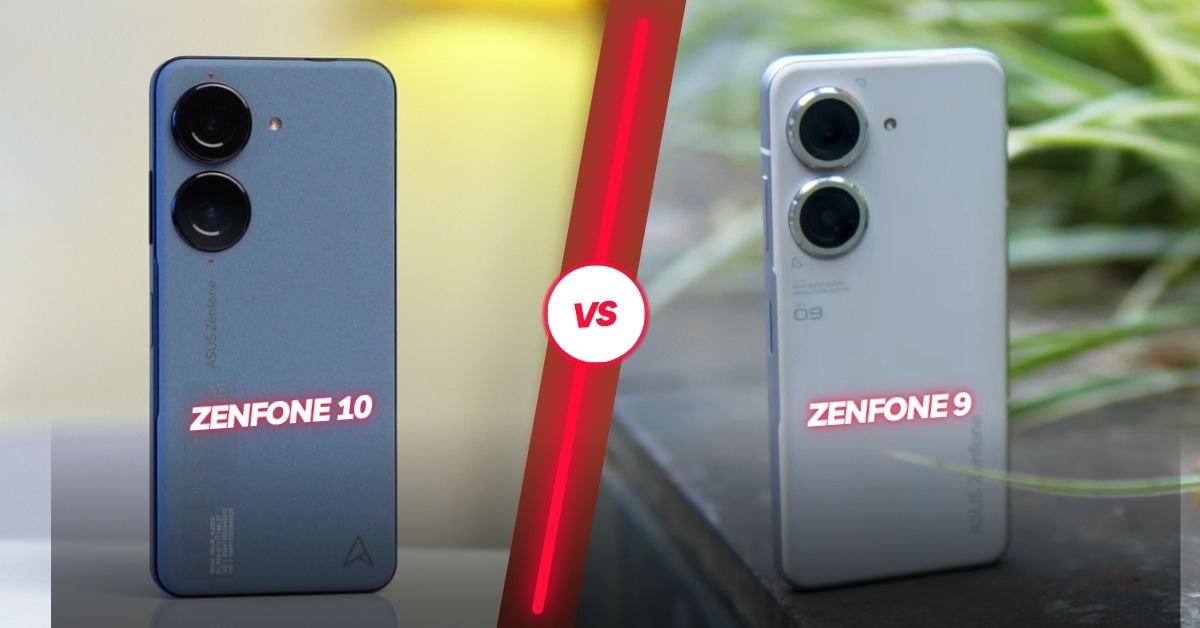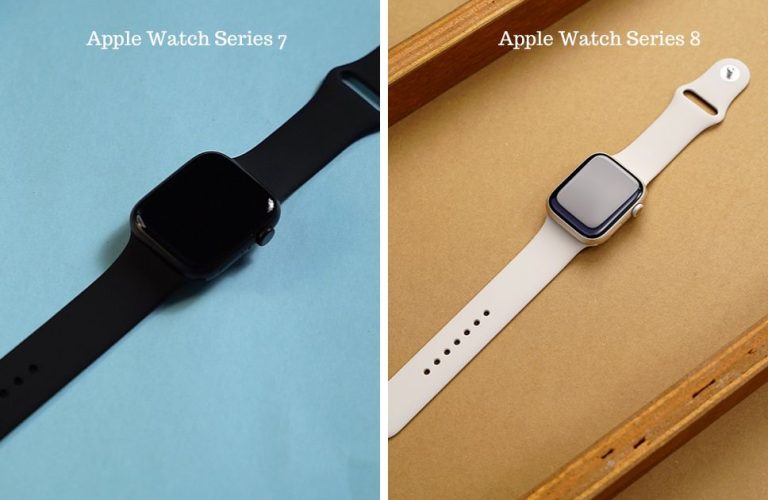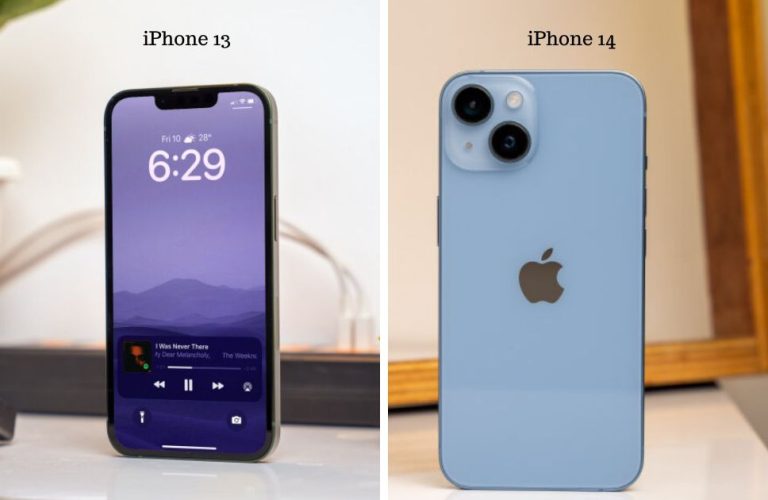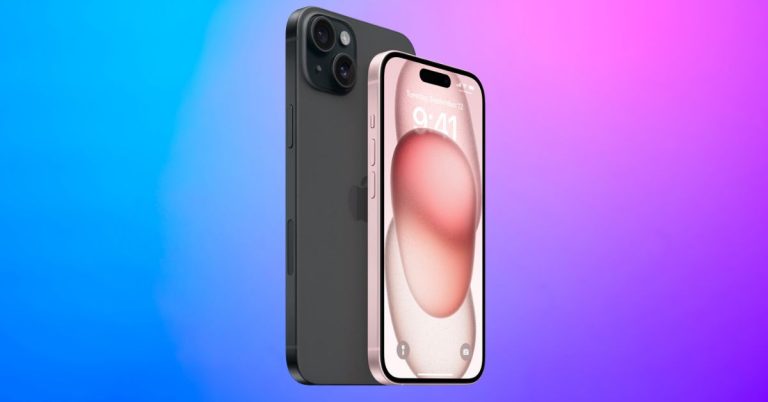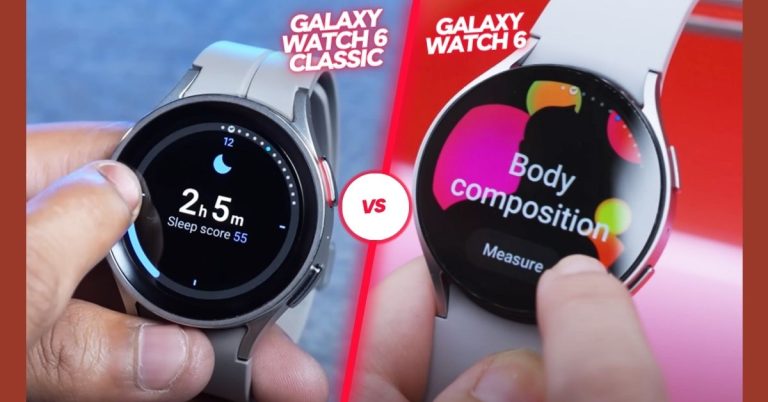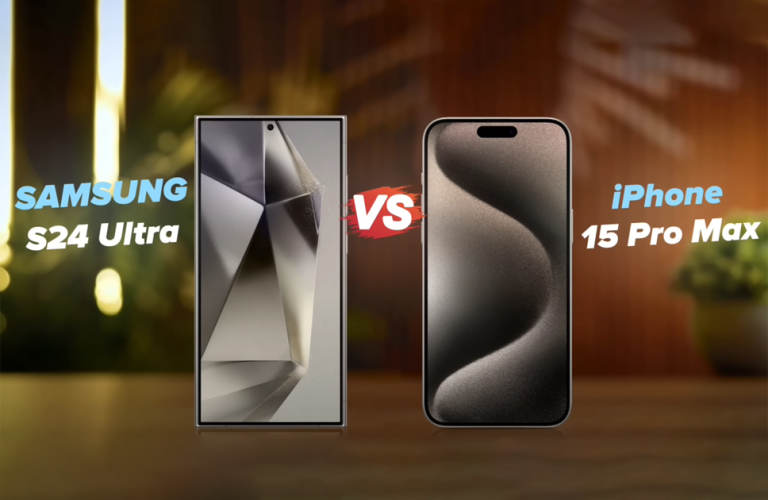Asus Zenfone 9 vs Zenfone 10: Spot the Difference!
Asus has been a consistent player in the smartphone market with its Zenfone lineup, offering impressive hardware options in a handy form factor. In 2022, the company caught attention with the Asus Zenfone 9, showcasing high-end specifications packed into a compact body.
Fast forward to June 29, 2023, Asus introduced the eagerly awaited Zenfone 10. While the design remained similar to its predecessor, significant improvements were made internally, including upgraded internals and a superior refresh rate. The question arises: is Asus merely offering hardware upgrades or are there other notable changes?
In this comparison between the Asus Zenfone 9 and Asus Zenfone 10, let’s delve deeper into their differences to determine if the latest model is truly worth the upgrade. Whether you should opt for the Zenfone 10 or stick with its predecessor your new device will become clearer as we explore their unique features and advancements.
Table of Contents
1. Asus Zenfone 9 vs Zenfone 10: Key Differences
| Asus Zenfone 9 | Asus Zenfone 10 |
|
|
|
|
|
|
|
|
Check Latest Price of Asus Zenfone 9 vs Zenfone 10
2. Asus Zenfone 9 vs Zenfone 10: Design
- New Asus “A” logo
- Similar design & Build

The design and build of the Asus Zenfone 9 and Zenfone 10 showcase a remarkable similarity, almost like playing a game of “spot the difference.”
The Zenfone 9, released last year, boasted a sleek matte finish on the back, providing a comfortable grip. It featured a dual-camera setup with a camera bump, accompanied by the Asus Zenfone logo. The phone was constructed with a plastic back, aluminum framing, and Gorilla Glass Victus protection.
Weighing a mere 169 grams and measuring 146.5mm in height, the Zenfone 9 offered a lightweight and pocketable design. It also supported dual SIM cards and featured IP68 protection against water and dust. The power button doubled as a fingerprint scanner, ensuring quick and responsive authentication, while the volume rocker was conveniently located above the power button and a 3.5mm headphone jack.
Moving on to the Zenfone 10, the design remains largely unchanged, with only minor alterations. The Asus Zenfone branding has been replaced with the stylish Asus “A” logo, positioned at the right corner of the device. The camera bump is still present, and the phone has gained a slight weight increase of 3 grams, now totaling 172 grams.
The height remains the same at 146.5mm, so once again, still a handy device. The build quality remains consistent, with a plastic matte back, aluminum framing, and a glass front for display protection. The bottom of the device houses the dual SIM tray and stereo speakers, a feature also found in the Zenfone 9.
The power button still doubles as a fingerprint scanner, offering the same quick response, while the volume rocker sits atop the power button for easy access. And yes, the 3.5mm headphone jack is still there.
3. Asus Zenfone 9 vs Zenfone 10: Display
- Same Super AMOLED Display
- Upgrades in Higher Refresh Rate

The display is a crucial aspect of a smartphone, as it is where all the magic happens when it comes to content viewing and gaming. Asus has kept a great display as before with one minor upgrade in the display department for the new Zenfone 10 compared to last year’s Zenfone 9.
The Zenfone 9 featured a 5.9-inch Super AMOLED panel with a 120Hz refresh rate, delivering faster frame rates in gaming. It also supported HDR10+ for an enhanced content viewing experience and offered a peak brightness of 1100 nits, ensuring excellent visibility outdoors. The display was protected by Gorilla Glass Victus, safeguarding against drops and scratches. Additionally, the Zenfone 9 included an Always-On display feature for quick notification glances.
On the other hand, the Zenfone 10 retains the same Super AMOLED 5.92-inch display and HDR10+ support for impressive content viewing on platforms like Netflix and YouTube. However, there is an upgrade in the refresh rate, now offering 144Hz compared to the previous 120Hz.
This significant jump in refresh rate ensures smoother frame rates in gaming and improved app performance. Do remember, that the benefits of the 144Hz refresh rate will be most noticeable in games that support this higher refresh rate, especially games like Shadowgun: Legends, Alto’s Adventure, and Magic Rampage offer 144Hz refresh rate compatibility.
The Zenfone 10 also maintains the Always-On display feature and offers the same 1100 nits of peak brightness. It is worth mentioning that Asus could have considered upgrading the peak brightness as well. Both the Zenfone 9 and Zenfone 10 share the same display resolution of 1080 x 2400 pixels, providing a pixel density of 445ppi. There have been no major upgrades in terms of resolution between the two models.
4. Asus Zenfone 9 vs Zenfone 10: Camera
- Upgraded Ultra-Wide Camera
- Upgraded Front Camera
The camera capabilities of the Asus Zenfone 9 and Zenfone 10 offer impressive features, with some notable improvements in the Zenfone 10, especially for selfie enthusiasts.

Starting with the Zenfone 9, it boasts a dual back camera setup. The main camera features a Sony IMX766 lens with a high-resolution 50MP wide shooter and an f/1.9 aperture. It incorporates a 6-Axis Hybrid Gimbal Stabilizer, ensuring sharp, blur-free images and stable video shooting.
Additionally, there is a 12MP ultra-wide lens with an f/2.2 aperture, providing a wide field of view of 113 degrees and the ability to capture close-up shots with a 4cm macro capability. The front camera of the Zenfone 9 features a 12MP sensor with an f/2.45 aperture, delivering quality selfies. Both the front and back cameras support 4K and 1080p video recording, with the back camera also capable of recording in Pro mode at up to 8K @24fps.
In comparison, the Zenfone 10 maintains the same Sony IMX766 50MP wide-angle shooter as its predecessor but introduces updated features. The Gimbal Stabilizer is enhanced to version 2.0, offering improved stability, and Adaptive EIS (Electronic Image Stabilization) is included as well. The ultrawide lens receives an upgrade to 13MP with a 120-degree field of view.
Notably, the front camera on the Zenfone 10 sees a significant improvement, with a 32MP sensor with f/2.5 aperture replacing the previous 12MP, resulting in more detailed and high-quality selfies. The Zenfone 10’s front camera also introduces RGBW technology, enhancing low-light performance for better selfie shots in challenging lighting conditions.
However, it’s worth noting that the front camera’s video recording capabilities have been reduced to 1080p, don’t know why Asus would make this downgrade change, as the previous Zenfone 9’s had the ability to record in 4K.
5. Asus Zenfone 9 vs Zenfone 10: Performance
- Upgraded Chipset
- Improved Storage Technology
When it comes to performance, both the Zenfone 9 and Zenfone 10 from Asus offer impressive capabilities, thanks to their advanced chipsets and optimized hardware components.
The Zenfone 9 features the Snapdragon 8+ Gen 1 chipset, which delivers excellent performance with its 3.19 Octa-core processing power. The inclusion of the Adreno 730 GPU enhances graphics rendering by 50%, resulting in smooth and immersive visuals. The device is equipped with up to 16GB of LPDDR5 RAM and up to 256GB of internal storage, utilizing fast UFS 3.1 storage technology.
This configuration ensures smooth app performance and ample space for storage. Additionally, the Zenfone 9 boasts Snapdragon Sound technology, dual stereo speakers, and Hi-Res Audio compatibility, delivering impressive sound quality. The device also supports Wi-Fi 6E and hyperfast 5G connectivity for faster connections.

In comparison, the Zenfone 10 takes performance to the next level with the updated Snapdragon 8 Gen 2 processor. This chipset offers a faster clock speed of 3.2 Octa-core processing power, resulting in snappy and responsive performance.
The Adreno 740 GPU delivers a 20% improvement in graphics performance, making it ideal for gaming, especially with a high refresh rate of 144Hz. The Zenfone 10 also benefits from an increase in CPU performance by 15% and GPU performance by 20% while maintaining 15% power efficiency.
Furthermore, the device comes with 16GB of the latest LPDDR5X RAM and up to 512GB of UFS 4.0 storage, providing ample space for storing files and applications. The dual stereo speakers and Dirac Virtuo technology create a theater-like sound experience. The Zenfone 10 supports Wi-Fi 7 for faster and more reliable connectivity.
6. Asus Zenfone 9 vs Zenfone 10: UI & OS
- Updated Android 13
- New dark screen feature
The software experience on the Asus Zenfone 9 and Zenfone 10 offers a blend of Google’s latest Android operating system and Asus’s own Zen UI. However, there are notable differences between the two models.
The Zenfone 9 comes with a previous version of Google’s Android 12, while the Zenfone 10 features the latest Android 13. Both devices offer a smooth and intuitive user interface, characteristic of Asus’s Zenfones.
The Zen UI on the Zenfone 9 provides a compact one-handed performance, ensuring a seamless user experience. It offers various features such as the edge tool for easier app navigation, a zoom bar scale for convenient zooming, and a back double-tap feature to take screenshots or open the camera or flashlight. Notably, the Zenfone 9 avoids excessive bloatware commonly found in other brands like Oppo or Vivo.
On the other hand, the Zenfone 10 builds upon this foundation with a few additional features. The new Zen UI, based on Android 13, retains a smooth experience and familiar user interface. Notable additions include “semantic search” in the gallery, allowing for easier content discovery.
Additionally, the power button now enables scrolling through notifications and web pages, providing a convenient way to view content from top to bottom. The Zenfone 10 also introduces “Dark Screen Shutter,” which allows users to quickly capture burst shots by pressing the volume key twice. This feature will particularly appeal to photography enthusiasts. Similar to its predecessor, the Zenfone 10 maintains a clean Android experience without unnecessary bloatware.
7. Asus Zenfone 9 vs Zenfone 10: Battery
- Same Battery Life
- Wireless Charging is Now Here

When it comes to battery life, the Zenfone 9 and Zenfone 10 from Asus offer a reliable power source to keep you going throughout the day. Both devices come equipped with a 4300mAh battery, ensuring sufficient power to support all the hardware components of the smartphone. This capacity allows for a full day of usage without the need for frequent charging or interruptions.
The Zenfone 9 features Asus’s signature HyperCharge technology, enabling 30-Watt charging. This means that even if you do need to charge your device, it can be done quickly and efficiently.
Additionally, the Zenfone 9 supports 5W reverse charging, allowing you to use your device as a power bank for other compatible devices. However, one drawback of the Zenfone 9 is the absence of wireless charging, which may be inconvenient for users who prefer the cable-free charging experience. On the bright side, the Zenfone 9 incorporates FFC Technology, reducing trickle-charging time and optimizing the charging process.
On the other hand, the Zenfone 10 maintains the same 4300mAh battery capacity and 30-W HyperCharge technology as its predecessor. This ensures consistent all-day battery life, providing reliable performance without letting you down. Notably, Asus has addressed the absence of wireless charging in the Zenfone 9 by including 15W wireless charging in the Zenfone 10, allowing for convenient and cable-free charging compatibility.
In terms of charging speed, both the Zenfone 9 and Zenfone 10 take nearly one hour and 20 minutes to reach a full 100% charge from 0%. This is a decent charging time and is made even more convenient by the inclusion of a 30W charger in the box. Unlike some other flagship models in the market, Asus acknowledges the importance of providing a charger with their devices, ensuring users have everything they need right out of the box.
8. Overall Specs
Here is a more specified overview of the Asus Zenfone 9 specifications against the Zenfone 10 specs-
| Specs | Asus Zenfone 9 | Asus Zenfone 10 |
| Display | 5.9 inch, Super AMOLED, 120Hz, HDR10+, 1100 nits peak, Always-On Display | 5.92 inch, Super AMOLED, 144Hz, HDR10+, 1100 nits peak, Always-On Display |
| Protection | Glass front (Gorilla Glass Victus), plastic back, aluminum frame IP68 – dust/water resistant (up to 1.5m for 30 min) |
Glass front (Gorilla Glass Victus), plastic back, aluminum frame IP68 – dust/water resistant (up to 1.5m for 30 min) |
| Camera | Main: 50 MP Main f/1.9, Gimbal OIS
12MP, f/2.2, Ultrawide Video: 8K@24fps, 4K@30/60fps, 1080@30/60fps, |
Main: 50 MP, f/1.9, 24mm Wide, Gimbal 2.0 OIS
13 MP, f/2.2, Ultrawide Features: LED Flash, panorama, HDR Video: 8K@24fps, 4K@30/60fps, 1080@30/60fps, Video: 1080@30fps |
| Platform | OS: Android 12, upgradable to Android 13 (ZenUI)
CPU: Snapdragon 8+ Gen 1 (4 nm) GPU: Adreno 730 |
OS: Android 13 (ZenUI)
CPU: Qualcomm Snapdragon 8+ Gen 2 (4 nm) GPU: Adreno 740 |
| Ram-ROM | 128GB 6GB RAM, 128GB 8GB RAM, 256GB 8GB RAM, 256GB 16GB RAM UFS 3.1 |
128GB 8GB RAM, 256GB 8GB RAM, 256GB 16GB RAM, 512GB 16GB RAM UFS: 4.0 |
| Battery | 4,300, 33W Wired, 5W reverse Wired | 4,300, 30W Wired, 15W Wireless, 5W reverse wired |
| Audio | Built‑in stereo speaker 3.5mm headphone jack |
Built‑in stereo speaker 3.5mm headphone jack |
| Features | Fingerprint (side-mounted), accelerometer, gyro, proximity, compass | Fingerprint (side-mounted), accelerometer, gyro, proximity, compass |
| Connectivity | Wi-Fi 802.11 a/b/g/n/ac/6e 5G, LTE, Bluetooth 5.2 | Wi-Fi 802.11 a/b/g/n/ac/6e/7, 5G, LTE, Bluetooth 5.3 |
| Colors | Starry Blue, Moonlight White, Sunset Red, Midnight Black | Starry Blue, Midnight Black, Aurora Green, Eclipse Red, Comet White |
9. Verdict
In conclusion, both the Asus Zenfone 9 and Zenfone 10 offer excellent features and solid performance, making them worthy choices in the smartphone market.
If you prioritize having the latest and most powerful processor, along with features like wireless charging and a high refresh rate of 144Hz, the Asus Zenfone 10 is the ideal option for you. It boasts a compact design, top-of-the-line hardware, and significant upgrades in terms of selfie capabilities, thanks to the higher-resolution front camera and improved low-light performance.
On the other hand, the Asus Zenfone 9 remains a solid choice, especially considering its lower price tag compared to the newer model. It still offers impressive features such as a smooth 120Hz refresh rate, a reliable charging system, and a good battery life. While it may lack wireless charging, it provides a seamless internal performance with last year’s flagship processor.
Ultimately, your decision between the Zenfone 9 and Zenfone 10 will depend on your specific needs and preferences. Both devices deliver a compact design, strong build quality, and excellent performance, ensuring a satisfying smartphone experience.
Lastly, if you just need a new device then the Asus Zenfone 9 could be a good deal, but it’s worth mentioning that from Asus Zenfone 10 is also a considerably great deal around that similar price range.
Get the Asus Zenfone 9, if:
> You want the A16 Bionic chipset, which is currently the best chipset in the world;
> You need the experience of the new dynamic island cutout and animations that come with it;
> You would like a bigger camera sensor of 48MP for capturing the best iPhone pictures.
[maxbutton id=”1″ url=”https://applegadgetsbd.com/product/asus-zenfone-9″ text=”Check Latest Price” ]
Get the Asus Zenfone 10, if:
> You need the best device from Apple at less price;
> You require a high-performance device with Apple’s A15 Bionic;
> You want a good battery life on an iPhone.
[maxbutton id=”1″ url=”https://applegadgetsbd.com/product/asus-zenfone-10″ text=”Check Latest Price” ]

Mohammad Shariful Islam is the CEO and MD of Apple Gadgets, a leading e-commerce and retail chain for gadgets in Bangladesh. He has a passion for technology, entrepreneurship, and holds a decade of experience in gadget E-Commerce. He’s committed to providing the best possible shopping experience for customers by delivering the latest and trendy gadgets.

